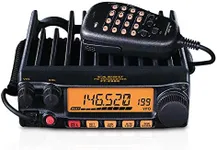Best Ham Radios
From leading brands and best sellers available on the web.
Kenwood
Kenwood TS-890S 100W HF/50MHz Transceiver with Advanced DSP

Icom
Icom IC-705 HF/VHF/UHF All Mode Portable QRP 5W/10W Transceiver

YAESU
Yaesu Original FT-991A HF/50/140/430 MHz All Mode Field Gear Transceiver - 100 Watts (50 Watts on 140/430MHz) - 3 Year Warranty
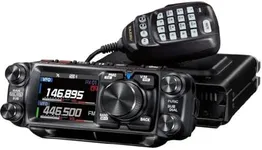
YAESU
Yaesu FTM-500DR C4FM Dual Band Digital and FM 50W Ham Transceiver
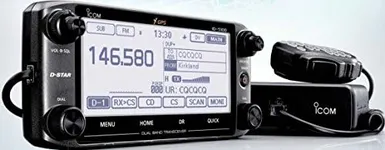
Icom
Icom ID-5100A DELUXE 144/440 Amateur Radio Mobile Transciver with Touch Screen, D-Star and Internal GPS

YAESU
YAESU Yaesu FT-5DR C4FM/FM 144/430MHz Dual Band 5W Digital Transceiver with Touch Screen Display Black
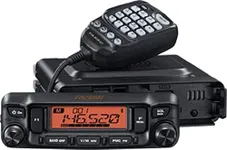
YAESU
YAESU Yaesu FTM-6000R 50W Compact Dual Band Mobile, Black
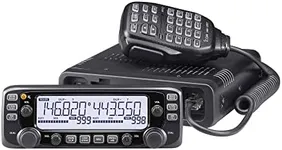
Icom
Icom IC-2730A Dual Band VHF/UHF 50W Mobile Radio
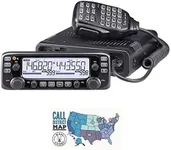
GigaParts
Bundle - 2 Items - Includes Icom IC-2730A Dual-Band VHF/UHF 50W Mobile Transceiver and Ham Guides TM Quick Reference Card
Our technology thoroughly searches through the online shopping world, reviewing hundreds of sites. We then process and analyze this information, updating in real-time to bring you the latest top-rated products. This way, you always get the best and most current options available.

Most Popular Categories Right Now
 Yehudah Posnick
Yehudah PosnickBuying Guide for the Best Ham Radios
Ham radio is similar to CB radio, in that it is radio for amateur users. But ham radio has much more range and versatility. While CB radio can be used by untrained and unlicensed people, using ham radio (= amateur radio service) requires a license, and that involves passing an exam and paying a fee. Also, a CB operates at low power (5 Watts), while ham radio can operate from 10-100 Watts, and even at as much as 1000 Watts. You’ll see ham radios that have one or several bands at which they broadcast. There are also variations as to their ability to receive other ham radio broadcast signals.
We've put together this guide to help you select the ham radio that answers to your needs. It'll help you:
-
Choose the right type of ham radio,
-
See useful tips about that type of ham radio,
-
Read reviews of different brands of ham radio, and what customers are saying,
-
Select the right brand of ham radio, and
-
Compare prices and find the best deals.
Types
We can distinguish between ham radios by looking at their capabilities:
-
Number of bands: The bands are the frequencies at which the ham radio broadcasts. You can find single-band ham radios, as well as 4-band radios. For example, the NKTECH TYT Quad Band Transceiver can broadcast at 4 bands: 29, 50, 144, 430 MHz. The ICOM 2300H 05 144MHz Amateur Radio broadcasts only at 144 MHz.
-
Reception: Another important spec is the number of bands at which the ham radio receives. The NKTECH TYT Quad Band Transceiver receives at 26-33MHz, 47-54 MHz, 108-180 MHz, 320-512 MHz and 750-950 MHz.
We can also distinguish between the size of the ham radio:
- Hand-held ham radio: These can be in a size only slightly larger than a smartphone. They'll look like the familiar walkie-talkie.
- Mobile ham radio: These will be installed in your auto. They will work at a higher power, and will thus have greater range.
What Reviewers Have to Say
Based on all the consumers' reviews we've scanned, these are the top things they mentioned about their new stuff:
-
Squelch feature: Some radios have a squelch feature, that helps you focus on particular frequencies and mutes out others that are nearby. You set a particular threshold for a signal strength with the squelch knob. If a signal is below this threshold, it will be muted.
-
Rechargeable batteries: Mobile units that you install in your car will be able to recharge their batteries from the 12V cigarette lighter. But hand-held models will have an AC adapter for recharging--this is somewhat slower.
Important Features
-
VHF/UHF vs. HF: You’ll see ham radios that can broadcast in the VHF/UHF region, as well as in the HF (High Frequency) region. If a ham radio broadcasts at just VHF and UHF bands, it will be good for regional use. A HF radio will be able to broadcast throughout a country or even world-wide.
-
Power: We mentioned that a big distinction between a CB radio and a ham radio is the power at which they broadcast. CB broadcasts are largely local, since their power is limited to 5 Watts. The LEIXEN VV-898E has three power settings: 5, 10 and 25 Watts. The more power that it uses, the further the broadcast will reach, and the greater the reception will be. Operating at a lower power will require the use of repeaters to receive and broadcast distant signals. Typically, hand-held ham radios will use 5 Watts, whereas mobile ham radios that you’ll install in your car will use 10 Watts or more. The ICOM 2300H 05 144MHz Amateur Radio uses 65 Watts of power for its output--that’s about 20 kilometers distance.
-
Memory channels: If there are certain channels that you refer to all the time, there are ham radios that store these channels in memory. The LUITON LT-8W can store up to 128 channels in memory.
-
CHIRP software: Even though you can program the channels and settings on your ham radio manually, there is free, open-source computer software called CHIRP that allows you to program the radio via your computer. You hook up the ham radio to your computer using a USB or HDMI cable, and install the software. You match up the manufacturer and model of your ham radio, and the software allows you to assign names to particular frequencies. That makes searching for frequencies much easier.
Top-Rated Brands
Baofeng--is located in Arlington, South Dakota. They are makers of licensed amateur radios for enthusiasts, as well as for commercial and public safety users. Their radios operate in both VHF and UHF frequencies, in narrowband and in wideband, and can be programmed manually or by means of a PC.
Retevis-- is a maker of two-way radios and radio accessories. They were founded in 2008 by Weidong Shen, and are located in Fujian, China. They make walkie-talkies, two-way radios, transceivers, handsets, and radio accessories.
Leixen--is located in Quanzhou, China, and are specialists in two-way radio. Their radios are used in transport, construction, telecommunications, security, restaurants, residential property management and more. They make transceivers, professional, commercial and amateur radios, and radio microphones.




